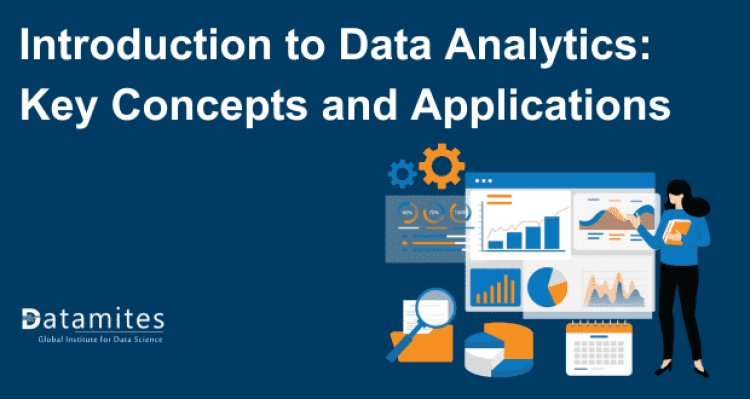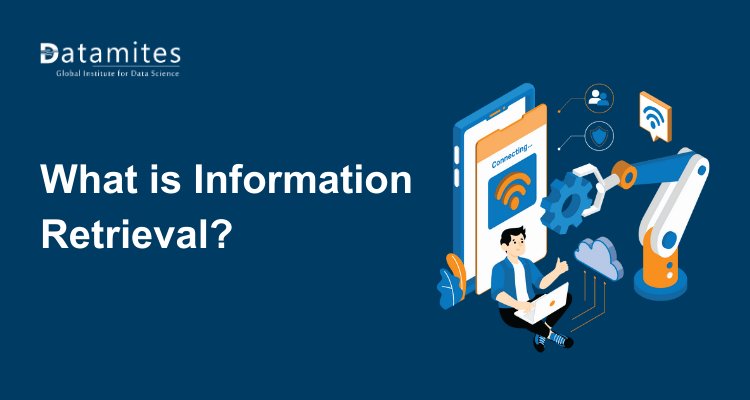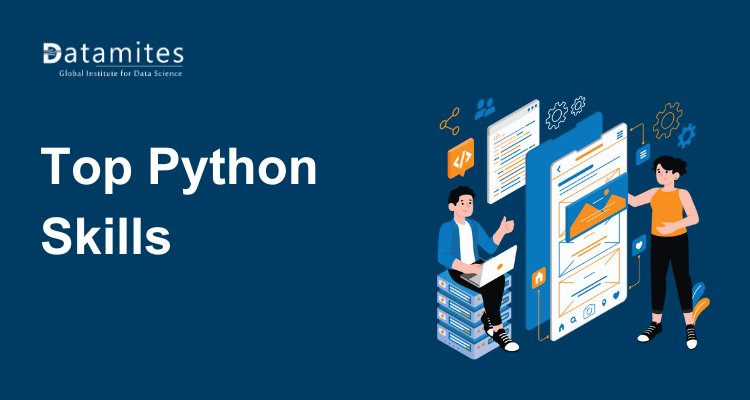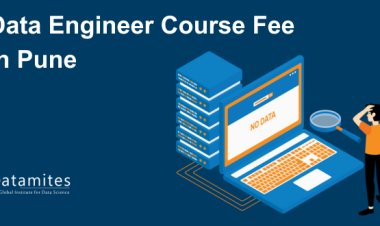Introduction to Data Analytics: Key Concepts and Applications

In today's increasingly data-centric world, the capacity to analyze and interpret data is indispensable for businesses, researchers, and decision-makers alike. Data analytics involves scrutinizing raw data to discern patterns, derive conclusions, and bolster decision-making. It draws on a spectrum of methodologies from statistics, computer science, and machine learning to transform extensive datasets into actionable insights.
According to a report by Allied Market Research, the global market for big data and business analytics was valued at $198.08 billion in 2020. By 2030, forecasts indicate that this market could expand to $684.12 billion, reflecting a compounded annual growth rate (CAGR) of 13.5% from 2021 through 2030. These statistics underscore the growing importance and impact of data analytics across various industries.
We will explore the key concepts of data analytics and delve into its numerous applications, highlighting how it empowers organizations to make informed decisions, optimize operations, and gain a competitive edge.
What is Data Analytics?
Data analytics involves analyzing raw data to discover patterns, make informed conclusions, and aid decision-making. This process includes transforming data into valuable insights that improve processes, elevate customer experiences, and foster innovation.
The Data Analytics Process
The process of data analytics typically involves various essential steps:
- Data Collection: Collecting data from diverse sources like databases, sensors, and online platforms.
- Data Cleaning: Ensuring that the data is precise, thorough, and free from errors or discrepancies.
- Data Analysis: Applying statistical and computational techniques to identify patterns and trends.
- Data Visualization: Creating visual representations of the data to make it easier to understand and interpret.
- Data Interpretation: Synthesizing insights and leveraging analyzed data to arrive at well-founded decisions.
Refer these articles:
Key Concepts in Data Analytics
Data analytics entails the scrutiny of datasets to derive insights and conclusions through specialized systems and software. Key concepts include data mining, predictive analytics, machine learning, and data visualization, all of which help organizations make informed decisions.
- Data vs. Information: Data consists of raw, unprocessed facts, whereas information is data that has been processed and interpreted to become meaningful and useful.
- Big Data: Big Data describes large volumes of data that cannot be easily processed with traditional methods. It encompasses three main characteristics: volume, variety, and velocity.
- Data Mining: Data mining involves delving into vast datasets using algorithms and statistical methods to reveal concealed patterns and relationships, crucial for discovering hidden insights and forecasting upcoming trends.
- Descriptive Analytics: Descriptive analytics involves summarizing past data to gain insights into historical trends and events, laying the groundwork for advanced analytical methods.
- Predictive Analytics: Predictive analytics uses historical data and machine learning techniques to forecast future events. It's widely used in industries like finance, marketing, and healthcare to anticipate trends and behaviors.
- Prescriptive Analytics: Prescriptive analytics goes beyond prediction by recommending actions based on the analyzed data. It helps organizations decide on the best course of action to achieve desired outcomes.
Read these articles: What is Datamites Certified Data Analyst Certification Course?
Tools and Technologies for Data Analytics
Several tools and technologies are pivotal in data analytics, each offering unique functionalities and advantages.
- Excel: Microsoft Excel stands out as a ubiquitous tool for data analysis, celebrated for its ease of use and robust capabilities in manipulating data, conducting statistical analyses, and creating visual representations.
- SQL: SQL, also known as Structured Query Language, plays a crucial role in the management and querying of relational databases.
- R: R is a programming language and environment crafted specifically for statistical computing and visualizing data. It’s favored for its extensive libraries and robust data analysis capabilities.
- Python: Python stands out as a versatile programming language renowned for its robust libraries like Pandas, NumPy, and Matplotlib, which empower data analysts and scientists with readability and flexibility, making it a top choice in their toolkit.
- Tableau: Tableau stands out as a premier data visualization tool, empowering users to craft interactive dashboards that can be easily shared. It simplifies the process of visualizing complex data and sharing insights with stakeholders.
Emerging Technologies and Trends
Emerging technologies such as artificial intelligence (AI), machine learning, and cloud computing are revolutionizing data analytics. These advancements are enhancing the accuracy of predictions, scalability of data processing, and accessibility of analytical tools.
Refer these articles:
Applications of Data Analytics
Data analytics is utilized in sectors like healthcare for predictive modeling to improve patient outcomes, and in retail for optimizing inventory and personalizing customer experiences. Additionally, it plays a crucial role in finance by detecting fraudulent activities and managing risk effectively.
Business and Marketing
In business and marketing, data analytics helps organizations understand customer behavior, optimize marketing strategies, and improve sales performance.
- Customer Segmentation: Identifying different customer groups based on purchasing behavior and preferences.
- Marketing Campaign Analysis: Assessing the impact of marketing campaigns and strategies.
- Sales Forecasting: Predicting future sales trends to make informed business decisions.
Healthcare
In healthcare, data analytics is used to improve patient outcomes, enhance operational efficiency, and advance medical research.
- Patient Data Analysis: Analyzing patient records to identify trends and improve treatment plans.
- Predictive Modeling for Diseases: Using historical data to predict disease outbreaks and patient health risks.
Finance
In the finance sector, data analytics plays a critical role in managing risks, detecting fraud, and making investment decisions.
- Risk Management: Assessing and mitigating financial risks by analyzing market trends and economic indicators.
- Fraud Detection: Identifying fraudulent activities through anomaly detection and pattern recognition.
Education
In education, data analytics helps institutions track student performance, personalize learning experiences, and enhance curriculum development.
- Student Performance Tracking: Monitoring student progress to identify areas of improvement and provide targeted support.
- Curriculum Improvement: Analyzing educational data to improve and enhance curriculum design.3
Refer these articles:
- Data Analyst Course Fee in India
- Data Analyst Course Fee in Bangalore
- Data Analyst Course Fee in Pune
Exploring Career Opportunities in Data Analytics
Data analytics professionals are essential for deciphering intricate data sets, enabling businesses to make well-informed decisions. Here's what you should be aware of if you're contemplating a career in data analytics and want to explore the available opportunities:
1. Data Analyst
- Responsibilities: Analyzing data, generating reports, identifying trends, and providing actionable insights to stakeholders.
- Skills Needed: Proficiency in statistical analysis tools (e.g., Python, R), data visualization, and strong problem-solving abilities.
2. Business Intelligence Analyst
- Responsibilities: Gathering business requirements, designing dashboards, and developing strategies based on data-driven insights.
- Skills Needed: Expertise in BI tools (e.g., Tableau, Power BI), SQL querying, and understanding of business operations.
3. Data Scientist
- Responsibilities: Leveraging machine learning algorithms to build predictive models, uncover patterns, and optimize processes.
- Skills Needed: Advanced programming skills (Python, Java), knowledge of ML frameworks (TensorFlow, scikit-learn), and a strong foundation in statistics.
4. Data Engineer
- Responsibilities: Designing and maintaining data pipelines, ensuring data availability, and optimizing data workflows for analysis.
- Skills Needed: Proficiency in big data technologies (Hadoop, Spark), database management (SQL, NoSQL), and cloud platforms (AWS, Azure).
5. Data Analyst Consultant
- Responsibilities: Providing specialized data analysis services to clients, often through consulting firms.
- Skills Required: Expertise in specific industries, project management, and client communication.
Data analytics is an indispensable tool in the modern digital landscape, offering valuable insights and driving informed decision-making across various industries. By understanding key concepts, leveraging appropriate tools, and applying analytics to specific domains, organizations can harness the power of data to achieve their goals and stay ahead in the competitive market. Whether you're pursuing a data analytics course or considering a data analytics certification, the knowledge and skills gained will undoubtedly enhance your career prospects and organizational impact.
DataMites Institute offers a comprehensive Certified Data Analyst Training program that spans over 6 months. The course focuses on equipping students with practical skills in data analysis and includes certification from IABAC®. Participants gain hands-on experience through real-time projects and internships, ensuring they are ready for the job market. A standout feature of the course is its no-coding approach, making it accessible even to those without programming backgrounds.
In addition to Data Analyst Training, DataMites Institute also provides courses in Data Science, Machine Learning, Python Programming, and Artificial Intelligence. These courses cater to different aspects of the data-driven industry, from foundational programming skills to advanced machine learning techniques.





